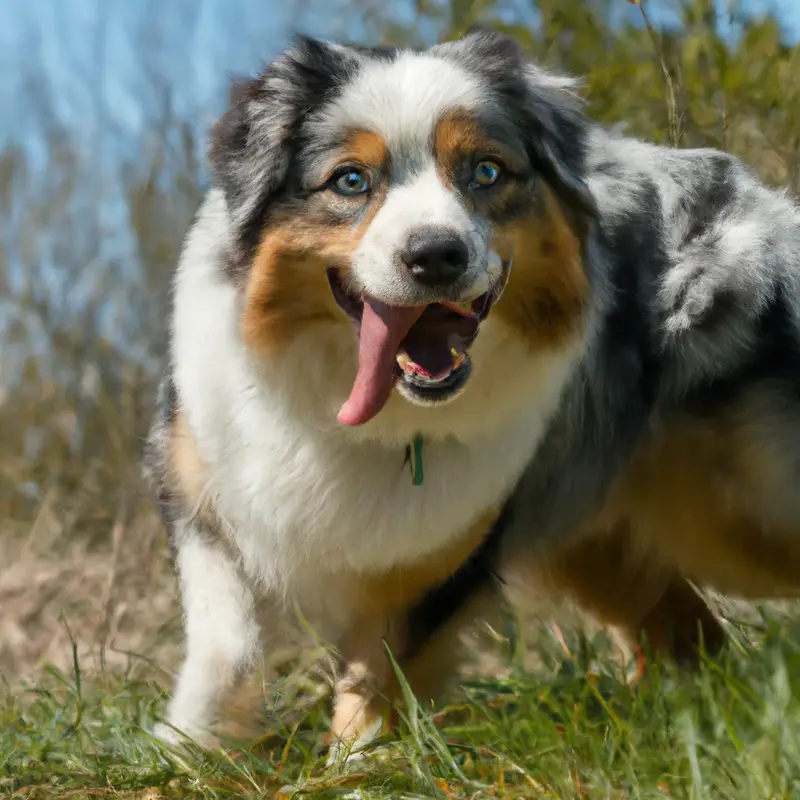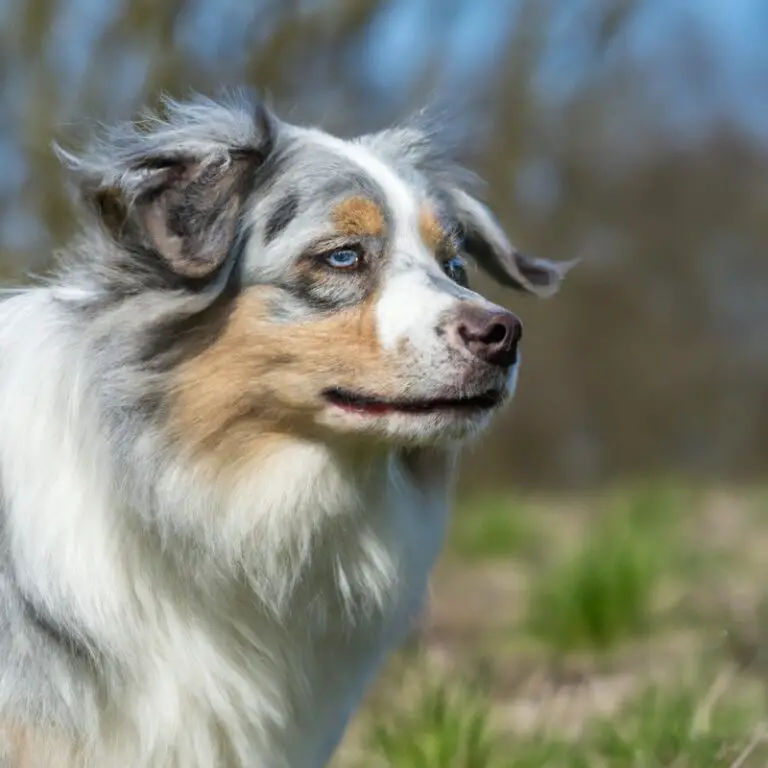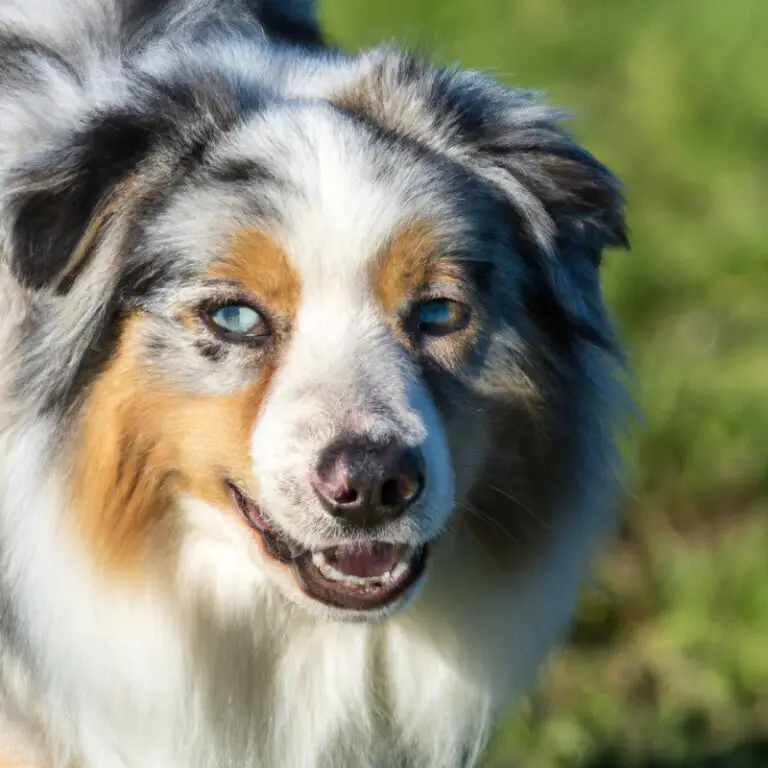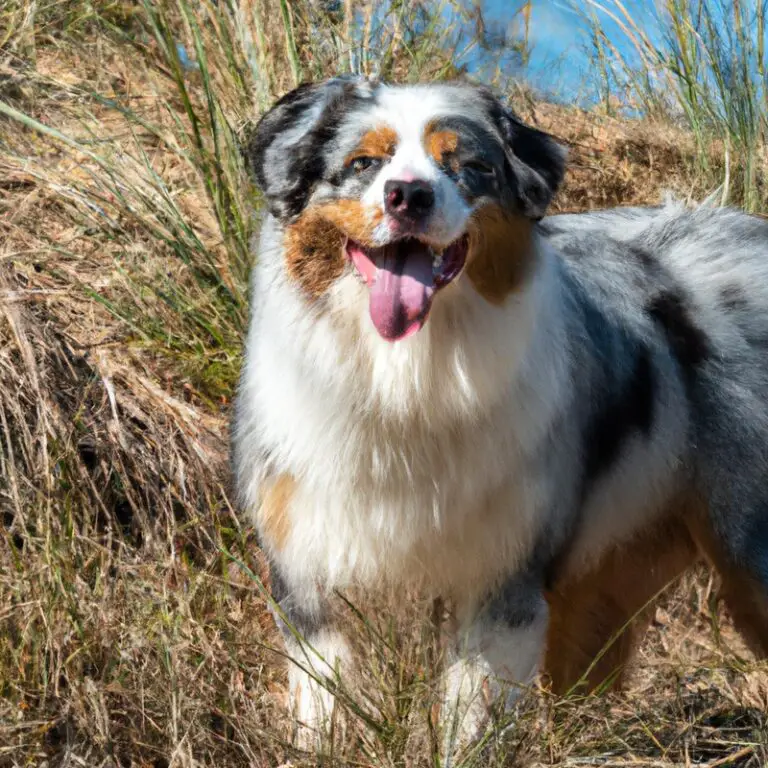Can Australian Shepherds Be Trained To Be Successful In Canine Freestyle?
Key Takeaways:
- Australian Shepherds can be successfully trained in canine freestyle.
- Proper training techniques and consistency are key to achieving success.
- Australian Shepherds’ intelligence and athleticism make them well-suited for canine freestyle.
- Positive reinforcement methods are effective in teaching these dogs complex routines.
Have you ever watched a dog dance? It may sound like something out of a fairy tale, but it’s real, and it’s called canine freestyle.
This exciting and creative sport combines obedience training, tricks, and choreography set to music.
But can Australian Shepherds, with their intelligence and boundless energy, excel at this unique sport? As a canine freestyle enthusiast and owner of an Australian Shepherd myself, I can confidently say yes! In this article, I will delve into the characteristics of Australian Shepherds, their suitability for canine freestyle, and provide tips on how to train them for success in this captivating dance form.
So, get ready to put on your dancing shoes and let’s explore the world of canine freestyle with Australian Shepherds!
| Aspect | Yes | No |
|---|---|---|
| Intelligence | ✔️ | ❌ |
| Affectionate | ✔️ | ❌ |
| Trainability | ✔️ | ❌ |
| Energy Level | ✔️ | ❌ |
| Temperament | ✔️ | ❌ |
| Physical Abilities | ✔️ | ❌ |
Understanding Canine Freestyle
What is Canine Freestyle?
Canine freestyle is a unique and creative dog sport that combines obedience, tricks, and dance. It involves choreographing routines to music, where dogs and their handlers perform a variety of moves and tricks.
The routines can be entertaining and often showcase the bond between the dog and handler.
Canine freestyle allows for individuality and creativity, and it’s a wonderful way to have fun and bond with your dog while showcasing their skills and talents.
Why is Canine Freestyle Popular?
Canine freestyle has gained popularity for several reasons. Firstly, it allows dog owners to showcase their creativity and bond with their dogs through dance-like routines.
This unique form of training combines obedience, tricks, and choreography, making it a fun and engaging activity for both dogs and their handlers.
Secondly, canine freestyle provides a platform for dog enthusiasts to express their passion and love for their furry companions. It offers an opportunity to showcase the unique skills and talents of each dog, regardless of breed or size.
Additionally, canine freestyle competitions and performances provide entertainment for audiences, showcasing the incredible connection and teamwork between dogs and their handlers.
It combines the beauty of music, movement, and the joy of watching dogs perform impressive tricks and synchronized routines. Furthermore, canine freestyle offers a great exercise for dogs, both mentally and physically.
The training involved in learning new tricks and routines stimulates their minds and helps prevent boredom.
It also improves their coordination, balance, and overall fitness. Lastly, the inclusive nature of canine freestyle contributes to its popularity.
It is a sport that anyone can participate in, regardless of age or physical abilities.
Canine freestyle welcomes all breeds and mixed breeds, creating an inclusive community of dog lovers.
Australian Shepherds and Canine Freestyle
Characteristics of Australian Shepherds
Australian Shepherds are known for their energetic and active nature, making them great candidates for canine freestyle. They are medium-sized dogs with a strong and agile build, which allows them to perform various tricks and movements.
One characteristic that sets Australian Shepherds apart is their intelligence.
They are highly trainable and quick learners, which can be a huge advantage when teaching them complex routines. They are also known for their strong work ethic and desire to please their owners, making them eager participants in training sessions.
Another important characteristic of Australian Shepherds is their natural athleticism.
They have a lot of energy and stamina, which is important for the physical demands of canine freestyle. Their agility and coordination allow them to execute movements with precision and grace.
In addition, Australian Shepherds are known for their versatility.
They can easily adapt to different environments and excel in various activities, including obedience, agility, and herding. This versatility can be a valuable asset in canine freestyle, as it requires a mix of obedience, tricks, and musicality.
Lastly, Australian Shepherds have a strong bond with their owners and thrive on positive reinforcement.
They are loyal and affectionate animals, which builds a strong foundation for a successful partnership in canine freestyle. Their eagerness to please and desire for human interaction make them highly motivated participants in training sessions.
Australian Shepherds’ Suitability for Canine Freestyle
Australian Shepherds are highly suitable for canine freestyle. With their intelligence, athleticism, and strong work ethic, they excel in this sport.
Their natural agility and fast learning abilities make them quick to pick up tricks and choreography.
Additionally, their versatility allows them to adapt to different music genres and perform complex routines. Australian Shepherds’ high energy levels and enthusiasm make them a joy to watch in the ring.
If you’re considering canine freestyle with an Australian Shepherd, you’ll likely find it to be a rewarding and enjoyable experience.
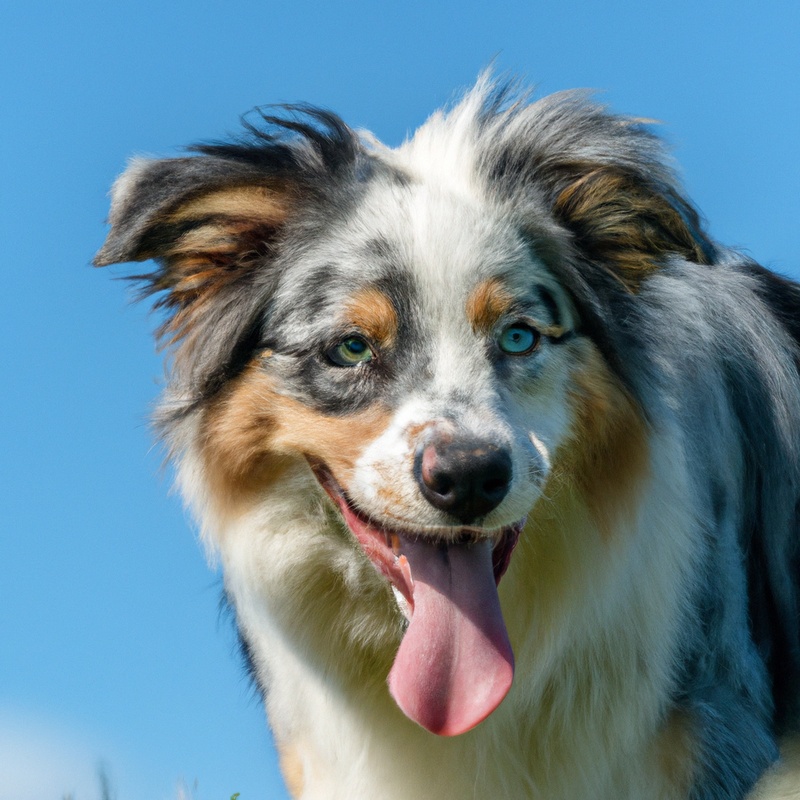
Training Australian Shepherds for Canine Freestyle
Basic Obedience Training for Australian Shepherds
Basic obedience training is essential for Australian Shepherds to excel in canine freestyle. Start with commands like sit, stay, come, and lie down.
Be patient and consistent in your training.
Use positive reinforcement, such as treats and praise, to reward desired behaviors. Practice these commands in various environments to improve their focus and response.
Additionally, leash training is crucial for control and safety.
Teaching basic obedience sets a strong foundation for more advanced training in canine freestyle.
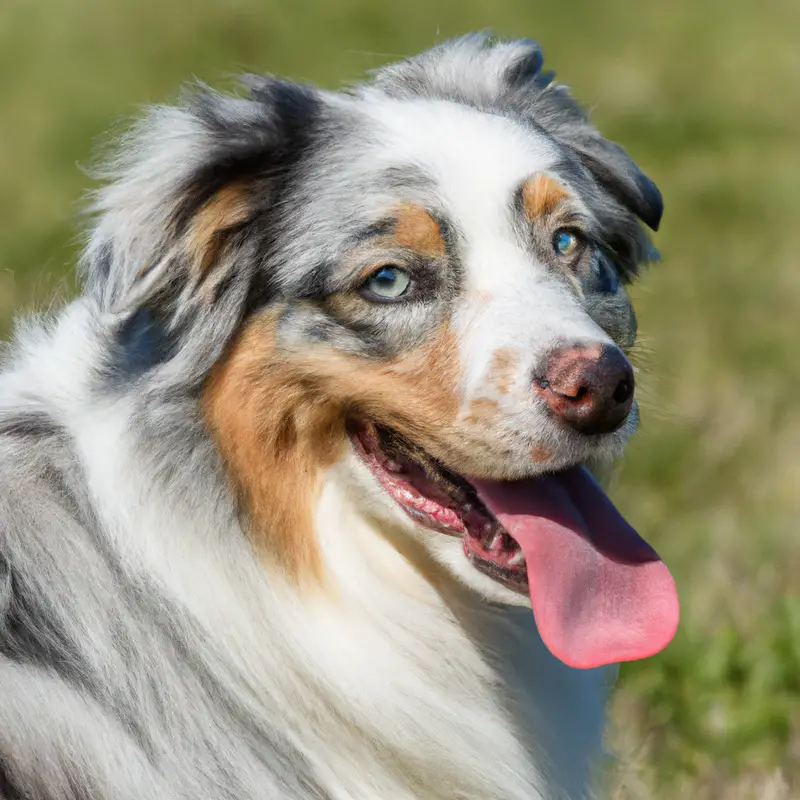
Building a Strong Foundation: Tricks and Behaviors
Building a strong foundation for canine freestyle training involves teaching your Australian Shepherd a repertoire of tricks and behaviors. These tricks and behaviors will form the building blocks for more complex routines in the future.
Start with basic obedience training, such as sit, stay, down, and come.
Then, move on to teaching your dog fun tricks like spinning, jumping through a hoop, weaving through your legs, and giving a paw. In addition to these tricks, it’s important to focus on behavior training.
Teach your Australian Shepherd good manners, such as walking politely on a leash, not jumping on people, and staying calm in different environments.
This will help your dog be well-behaved and focused during performances. Consistency is key when building a strong foundation.
Practice these tricks and behaviors regularly, in short training sessions.
Use positive reinforcement methods, such as rewards and praise, to motivate and encourage your dog. Be patient and understanding, as some tricks may take time for your Australian Shepherd to master.
By building a strong foundation of tricks and behaviors, you are setting your Australian Shepherd up for success in canine freestyle.
These foundational skills will not only make your routines more impressive, but they will also enhance your dog’s overall obedience and communication with you. So, have fun and enjoy the journey of training your Australian Shepherd for canine freestyle!
Polishing the Routine: Choreography and Musicality
Polishing the routine is where the magic happens in canine freestyle. When it comes to choreography and musicality, Australian Shepherds excel with their natural grace and intelligence.
By tapping into their strengths, you can create a captivating routine that showcases their unique skills.
When choreographing your routine, consider the personality and abilities of your Australian Shepherd. Highlight their athleticism and agility through fluid movements and eye-catching tricks.
Use the music to enhance their performance, matching the tempo and mood to their actions.
Remember to keep the routine interesting and varied. Incorporate different moves, spins, jumps, and turns to showcase the versatility of your dog.
Use props or formations to add a touch of creativity and visual appeal to your routine.
Musicality is another crucial aspect of polishing your routine. Choose music that complements your Australian Shepherd’s personality and style.
Consider their energy levels and adapt the routine to match the highs and lows of the music.
Practice timing and synchronization to ensure that your movements align with the beats and pauses in the music. This will create a harmonious and captivating performance.
Keep in mind that polishing your routine takes time and practice.
Experiment with different choreography and music choices to find what works best for you and your Australian Shepherd. With consistency and dedication, you can create a show-stopping routine that highlights the beauty and charm of this extraordinary breed.
Challenges and Tips for Success
Challenges in Training Australian Shepherds for Canine Freestyle
Training Australian Shepherds for Canine Freestyle can come with its fair share of challenges. These intelligent and energetic dogs require consistent training, mental stimulation, and patience to succeed in this freestyle sport.
One challenge is their herding instinct.
Australian Shepherds have a strong instinct to chase and control moving objects, which can make it difficult to keep them focused during routines. It is important to work on impulse control and redirect their focus during training.
Another challenge is their high energy levels.
Australian Shepherds are a highly active breed and require plenty of physical and mental exercise. Without sufficient exercise, they can become restless and have difficulty concentrating during freestyle routines.
Regular exercise sessions and sufficient mental stimulation are key to helping them remain focused and calm.
Training complex moves and behaviors can be another challenge with Australian Shepherds. While they are intelligent and quick learners, they can also be independent and stubborn.
It is important to break down the routines into smaller, achievable steps and use positive reinforcement techniques to motivate them to perform the desired behaviors.
Lastly, the challenge of maintaining motivation and enthusiasm throughout the training process can arise. Australian Shepherds thrive on variety and novelty, so it is important to keep training sessions engaging and fun.
Incorporating toys, treats, and play into the training sessions can help maintain their enthusiasm and eagerness to learn.
Despite these challenges, training Australian Shepherds for Canine Freestyle can be a rewarding and enjoyable experience. With consistency, patience, and positive reinforcement, you can overcome these challenges and achieve success in this exciting freestyle sport.

Tips for Overcoming Challenges and Achieving Success
Overcoming challenges and achieving success in training your Australian Shepherd for canine freestyle requires a few key tips. Here’s what I suggest:
- Stay patient and consistent: Training takes time, and it’s important to be patient with your dog. Consistency in your training methods and routines will help your Australian Shepherd understand what is expected of them.
- Break it down: Instead of overwhelming your dog with complex routines, break them down into smaller, manageable steps. This will make the learning process easier for both of you.
- Use positive reinforcement: Reward-based training methods work best with Australian Shepherds. Use treats, praise, and playtime as rewards to motivate and reinforce good behavior.
- Practice regularly: Consistency in training is key. Set aside regular practice sessions to work on obedience, tricks, and choreography. This will help your Australian Shepherd build confidence and improve their performance.
- Seek professional guidance: If you’re struggling with certain aspects of canine freestyle training, don’t hesitate to seek help from a professional trainer or attend workshops and classes. They can provide valuable guidance and support.
- Focus on building a strong bond: Developing a strong bond with your Australian Shepherd is important for successful training. Spend quality time together, engage in fun activities, and foster a positive relationship.
- Stay positive and have fun: Training should be a fun and enjoyable experience for both you and your dog. Maintain a positive attitude, celebrate small victories, and embrace the joy of training and performing together.
Remember, every dog learns differently, so be patient and adapt your training methods accordingly. With the right mindset and approach, you can overcome challenges and achieve success in canine freestyle with your Australian Shepherd.
Good luck!
Importance of Consistency and Reward-Based Training
Consistency and reward-based training are key elements in successfully training Australian Shepherds for canine freestyle. Consistency helps establish clear expectations and reinforces desired behaviors.
By consistently using the same commands and cues, your dog will learn faster and be less confused.
Incorporating rewards, such as treats or praise, motivates your Australian Shepherd and makes training enjoyable for both of you. This positive reinforcement strengthens the bond between you and encourages your dog to continue learning.
Remember to be patient and consistent in your training approach, and always reward your Australian Shepherd for their good behavior.
Resources for Training and Competing
Recommended Books and DVDs for Canine Freestyle Training
If you’re looking for resources to help you train your Australian Shepherd in canine freestyle, here are some recommended books and DVDs:
1. “Dancing with Your Dog: Beginner’s Guide to Canine Freestyle” by Sandra Davis.
This book provides a comprehensive guide for beginners, covering everything from basic obedience training to creating captivating routines.
2. “Freestyle Tricks and Routines for Your Dog: Step-by-Step Guide” by Mary Kay Taylor.
This book focuses on teaching a variety of tricks and building them into impressive routines. It includes step-by-step instructions and helpful tips.
3. “Canine Freestyle: An Introduction to Musical Freestyle” by Michele Pouliot.
Written by a renowned freestyle trainer, this book offers a detailed introduction to the sport. It covers choreography, musicality, and training techniques.
4. “Canine Freestyle: The Video” by Emily Larlham.
This instructional DVD provides visual examples and demonstrations of various freestyle techniques. It’s a great resource for visual learners.
5. “Creating Successful FreeStyle Routines” by Debby Quigley.
This DVD focuses on designing and choreographing routines that showcase your dog’s skills and personality. It covers transitions, flow, and musical interpretation.
Remember, these books and DVDs are just tools to help you.
Don’t forget to practice, have fun, and tailor your training to suit your Australian Shepherd’s individual needs and abilities. Happy dancing!
Finding Canine Freestyle Classes and Workshops
If you’re interested in finding canine freestyle classes and workshops, there are a few resources you can explore to help you get started. One option is to search online for local training facilities or dog clubs that offer canine freestyle classes.
Many of these organizations have websites or social media pages where they advertise their classes and workshops.
You can also reach out to local dog trainers or behaviorists who may offer canine freestyle training as part of their services. They may be able to help you find classes or workshops in your area or even offer private lessons.
Additionally, there are online platforms and forums dedicated to canine freestyle where you can connect with other enthusiasts and trainers.
These communities often share information about upcoming classes, workshops, and events. Attending canine freestyle competitions or events is another way to discover classes and workshops.
These events bring together trainers, competitors, and spectators, providing opportunities to network and gather information about training resources.
By exploring these options and being proactive in seeking out opportunities, you can find canine freestyle classes and workshops to enhance your training journey. Remember to consider factors such as location, cost, and the expertise of the instructors when making your choices.
Competing in Canine Freestyle Events
Competing in canine freestyle events is an exciting and rewarding experience for both you and your Australian Shepherd. These events allow you to showcase the hard work and training you have put into your routines.
To compete successfully in canine freestyle events, there are a few things to keep in mind.
Firstly, it is important to thoroughly understand the competition rules and guidelines. Each event may have its own specific requirements and scoring criteria.
Take the time to familiarize yourself with these rules so that you can design and perform a routine that meets the criteria.
Secondly, practice is key. Regularly rehearse your routine with your Australian Shepherd to ensure that both of you are comfortable and confident in performing together.
This will help you to establish a strong connection and smooth communication during the competition.
Thirdly, pay attention to the details. Judges will be looking for precision, synchronization, and creativity in your routine.
Focus on incorporating interesting and unique moves, and make sure that you and your Australian Shepherd are in sync with each other throughout the performance.
Lastly, don’t forget to enjoy the experience. Canine freestyle is all about the bond and connection between you and your dog.
Have fun and let your love for your Australian Shepherd shine through in your routine.
Competing in canine freestyle events with your Australian Shepherd can be a fantastic adventure. With practice, attention to detail, and a love for the sport, you and your dog can achieve great success in the competition ring.
So, get out there, have fun, and show off the amazing skills of your Australian Shepherd in canine freestyle events!
Final Verdict
I firmly believe that Australian Shepherds can excel in canine freestyle with the right training and dedication. Their natural intelligence, agility, and willingness to please make them well-suited for this activity.
By focusing on basic obedience training, building a strong foundation of tricks and behaviors, and honing choreography and musicality, Australian Shepherds can become exceptional performers in this unique sport.
Although there may be challenges along the way, with consistency, reward-based training, and a positive mindset, you can overcome any obstacles and achieve success with your Australian Shepherd in the world of canine freestyle. Remember to utilize the recommended resources, such as books, DVDs, and classes, to enhance your training journey.
So go ahead, embrace the harmonious partnership between you and your Australian Shepherd, and watch as you both shine on the dance floor.

